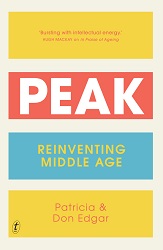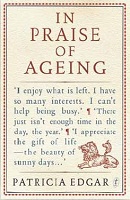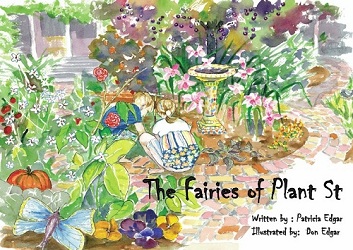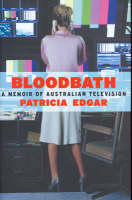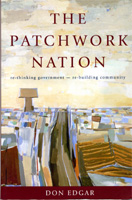PART A –Today’s technology
- CURRENT SITUATION
Television, film and computer games are already playing a role in educating young children but there is significant potential to capitalise on their ability to enhance development and learning.
Media technology is pervasive and covers:
- radio and television broadcasting on in-house sets, iPods and portable players or on mobile phones
- films and TV programs broadcast or on DVDs
- computer games on PCs, laptops or hand-held modules and interactive games on the internet
- communicative media such as chat rooms, mobiles and email.
This paper focuses primarily on children under the age of eight who are less involved with the communicative media.
Research suggests most children acquire many of their media literacy functional skills early and without much formal instruction.
Children under age 6 already have good media skills – by themselves:
- 74% can turn on the TV
- 58% can use the remote
- 46% can put on a video or DVD.
A recent Australian Communications and Media Authority survey of media use (ACMA, 2007) found that children aged 0-4 spent:
- 154 minutes per day viewing free-to-air television (127 minutes on commercial channels)
- 194 minutes per day watching subscription TV.
That makes a total viewing time average of 5 hours 48 minutes per day for the youngest children who are the heaviest viewers of television in the family. Programs made for these children are often inadequate and the children are regularly viewing adult programs for much of the day.
Comparable figures for 5-12 year olds were:
- 130 minutes per day viewing free-to-air
- 160 minutes for subscription TV.
This represents a total viewing time average of 4 hours 50 minutes per day. This average is arguably too much for young children who need a variety of physical and social experiences for healthy development. Averages also hide the extensive viewing by children at the upper limit of the normal distribution curve that takes up a large proportion of a child’s day.
The Australian Institute of Family Studies’ Longitudinal Study of Australian Children (LSAC) provides an indication of variations in media use by different social groups in Australia. For example:
- four-year-old children of parents with a higher education spend less time watching TV than those in low education households
- girls watch less than boys
- children watch 9-15 minutes more TV per day if the mother is not employed
- children in one-parent households watch more than those in two-parent families.
Between 2000 and 2005, young children’s use of computers and the internet rose from 7% to 23%, with children showing a strong preference for educational interactive games. (Children Now Report, p. 10).
The latest figures on computer-based games come from a survey of 1600 Australian households conducted by Bond University for the Interactive Entertainment Association of Australia (October, 2008). This is a rapidly growing area of media involvement, with:
- 70% of all Australians playing games
- 95% of all children aged six to 10 playing games
- 88% of Australian households owning a games console
- 18% of Australian households owning four
- 1.2 million consoles purchased in the first nine months of 2008
- TV-based consoles – 43%
- PCs – 39%
- hand-held gaming consoles – 18%. (Hill, 2008)
According to the Cartoon Network’s New Generations 2008 survey, since 2004 the number of seven- and eight-year-olds surfing the web daily has jumped from 7% to 22%. (Emily Power, 2008) The 2008 Norton Online Living Report said 96% of Australian children now find information for their school projects on the internet.
- OPPORTUNITIES
Television
Television can be a wonderful story-teller. The benefits that flow to children from good storytelling are many and television’s learning outcomes need to be considered as part of the 0-8 curriculum. Children have always been drawn to drama over factual children’s programming. (SPAA, 2008)
Stories are the glue that binds the community together. They give children a shared purpose, a roadmap for their lives and teach them about their feelings, their tribe, their culture and their place in the world. A cohesive national culture and identity that requires development through education from an early age would not be possible without shared cultural experiences which film and television programs enable. That is why Australian and local programming is important for children.
When done well, television programs can stimulate a child's imagination and open up the infinite opportunities that life presents. Like good books, good television programs can extend children’s understanding of their world. Stories are particularly effective in helping children develop emotionally.
In Howard Gardner’s terms they develop their inter- and intra-personal intelligences. Several studies have demonstrated, for example, the strong link between Sesame Street and children’s readiness for kindergarten, regardless of socio-economic status, and those effects can last well into high school. In more recent years, Sesame Street has gone beyond the basics of number and the alphabet to incorporate elements of Gardner’s ‘multiple intelligences’.
Children will watch good programs repeatedly, and keep watching them as they grow older, learning different things each time because they can engage with quality content in increasingly sophisticated ways. The young brain’s plasticity, its capacity to learn through repetition and reinforcement and the forging of new connections, make good media experiences a potent learning and developmental tool.
Play is important in children’s emotional development. A young child can try out roles not yet possible in the real world; television can expand their world of play and take them to places they could not imagine. The 0-5 age group is moving from a self-centred view of the world to a more social outlook, so observing the experience of others in stories on television can enhance their understanding of their world. Preschoolers are also forming their personal style, their sense of identity within their family, in a sex role, outside the family and within an ethnic or racial group. Television programming feeds into this emerging social-self and can be used to present a wide range of role models and images that show different cultures, styles and environments.
Good children's television comprises programs made especially for children that reflect the complexity of the emotional changes within the age group and honestly deal with conflicts that such diversity demonstrates. These programs can help clarify emotions, reflect anxieties and hopes and recognise problems while suggesting solutions to overcome hardships and worries. In their early years preschoolers need to be hearing and seeing stories which help them work through their fears in a positive manner. They need to learn to share, to appreciate others, to know that jealousy, greed and anger are feelings we all have that we must learn to control. They are on a journey to discover how to connect emotions and motivations of characters to their actions. Zimmerman (2007) says programs such as Blue’s Clues ‘cleverly use the medium of TV to expand not only the child’s understanding of, but also his or her interaction with the real world’. Television is well placed to provide such experiences.
Programs such as Barney & Friends, Sesame Street, Blue’s Clues, Dora the Explorer and others claim to combine more than 100 potential teaching elements and enhance children’s performance in social skills, imagination, singing and dancing through active engagement with program content. Cognitive gains include numbers, letters and vocabulary; social learning such as taking turns, sharing and cooperation; physical improvements in small and large motor skills; and emotional lessons in dealing with anger, disappointment, feeling sad or happy. (Weber & Singer, 2004).
Unlike some curriculum and media approaches which rigidly separate what experiences are appropriate for infants compared with toddlers and older children, the evidence is that quality TV programs and games can be designed for three to eight-year-olds and understood by them at different levels. The younger ones take in messages that match their level of cognitive development and older children interpret them at a more sophisticated level. Technology makes it possible to design programs that are not only appropriate to a particular age group, but also to different developmental levels within that age group. The computer is inherently adaptable to different learning styles, but there is as yet little evidence of that adaptability being harnessed in the cause of more individually appropriate learning.
Educational games
Gaming has come a long way over the past decade. Early games were played on a dedicated video device; now platforms range from personal computers to small hand-held devices. Equipped with user-friendly screens, mobile phones, PDAs, graphing calculators, GPS receivers, MP3 players, digital cameras and watches can be used to play games on-line or off-line. This increased accessibility has helped create a huge explosion in gaming, leading to many young gamers drifting away from television to spend time with interactive play.
Games can be used with positive results to assist learning from 3-8 but so far there have been relatively limited attempts to integrate game-playing into the classroom in Australia.
There are games being sold to teach times-tables, numbers, letters, reading and comprehension. Such materials can be overtly didactic with content that is little more than drill with graphics rather than carefully and well developed curriculum content. Puzzle games, however, are now beginning to realise the promise of technology and learning. For example, Nintendo’s Brain Age and Big Brain Academy, based around maths, logic and visual exercises are research-based games that develop skills and they are regarded as quality entertainment.
Quality educational games can be developed for preschoolers around shapes, colours, numbers, counting and reading. Games are particularly useful for children with learning disabilities and enhance hand and eye coordination. (Novak and Levy, pp.222-3).
There is now, however, a growing body of evidence demonstrating that narrative-based games are effective and valuable tools for learning. Narrative-based games have an enthusiastic following with children from a very early age and across all ages.
The iterative strategies developed through game-playing include the following elements:
- children seek information and piece together data from many places
- they make decisions quickly which have clear consequences
- they become experts at multi-tasking and parallel processing and learn to collaborate with others over a range of networks.
Game players can acquire these skills at a very early age. Four- and five-year-olds play such games as The Sims (the most popular computer game ever made, which is essentially a ‘living dollhouse’) and Roller Coaster Tycoon where the basic goal is to create a successful theme park.
Children Now sums up the research on children’s use of interactive media saying thatchildren who use computers show superior spoken communication and cooperation, can play better within a set of rules, share leadership roles, take turns, and initiate interactions. Children learn to use more complex speech patterns and higher levels of verbal communication because they tend to narrate what they are doing as they play. They have better phonological awareness, tell more sophisticated stories and have better writing skills. Interactive story books allow children to control the story and ask for help and get it. (Cassell, 2004; Foster, Erickson et al 1994; Ryokai et al, 2003; Chera & Wood, 2003; Lewin, 2000)
For most children, using the computer does not isolate them but helps to connect them with others. Computer activity motivates and produces a longer attention span and enhances self-concept and attitudes to learning because it insists on mastery from level to level.
In 2006, the Federation of American Scientists issued a statement supporting the use of computer and video games in classrooms:
“…educational games are fundamentally different than prevailing instruction because they’re based on challenge, reward, learning through doing and guided discovery in contrast to the ‘tell and test’ methods of traditional instruction … Games offer attributes important for learning – clear goals, lessons that can be practiced repeatedly until mastered, monitoring learner progress and adjusting instruction to learner level of mastery, closing the gap between what is learned and its use, motivation that encourages time on task, personalisation of learning, and infinite patience.”
There is no research with pre-schoolers that documents their capabilities with technology and the potential for learning games can engender. But there is an interesting case study reported by Professor James Paul Gee, Professor of Reading, University of Wisconsin, USA:
“Gee described his nine-year-old son's progress with technology which began at age three with him sitting on his father’s lap with one of the Winnie the Pooh books on the computer. The father would control the mouse and the son would tap the screen. The three-year-old soon learnt how to use the mouse, the conventions of a computer, how the screen worked and that some things on the screen were clickable. Eventually the child wanted to take over much more control of the game itself.
“Gee bought his son two plastic Pokémon figures from the supermarket; he was given a few Pokémon books, activity books and sticker books which introduced him to the whole Pokémon universe, including the game. They got him a Game Boy but because the boy couldn't read he was unable to play. His mother sat with him and they played the game together. Pokémon motivated the son very strongly to want to read the names of the Pokémon, play the game by himself and do a lot more on the Internet.
“By the end of his first year at kindergarten the boy was able to read. He became interested in evolution because of the evolution of Pokémon characters. This led to his dinosaur craze and he went on to other games. By the age of seven in First Grade, the son wanted to play Age of Mythology. His father told him he felt it was over his head. The response was that there were several children in first grade playing it. And in fact there were. He and his friends got books out of the school library – fifth and sixth grade books. They went onto a lot of web sites about mythology and wanted to visit museums. By age nine the son started to play Yu-Gi-Oh on Game Boy. To play you need to read the back of the card to negotiate what you are going to do; this game playing is done in a very social setting.”
Marc Prensky, Don't bother me mom - I'm learning!, pp. 161- 167)
Children up to age eight are learning many cognitive skills which can be assisted by games, including:
|
|
Mark Prensky (2006) shows in his book Don’t bother me Mum, I’m learning! how games help cognitive development in progressively complex ways.
Prensky says games teach children about:
|
|
|
|
|
|
|
|
Learning and Teaching Scotland (LTS) has analysed the effect of playing a brain-training game every day on the dual-screen handheld Nintendo game console. The study, which involved more than 600 pupils in 32 schools across Scotland, found the game improved pupils’ concentration and behaviour with less time needed to complete the tests. The improvement in the games group doubled that of the control group. LTS said the results offered the first independent, academic evidence that this type of computer game could improve attainment when used in an educational context. (BBC News 25/9/08, http://news.bbc.co.uk/go/pr/fr/-/hi/scotland/7635404.stm
As a lucrative industry, games are developing apace. As the production values of video games have improved over the years, both in visual appearance and depth of storytelling, the creators have produced more and more lifelike, complex games that push the boundaries of the traditional gaming genres and make them an increasingly important communication, entertainment and educational medium.
Through such games young people are learning how to play, express themselves and collaborate in large-scale communities. But according to Professor Henry Jenkins from the Massachusetts Institute of Technology there is another skill often missing in games – judgment. Few children ask about the motives or accuracy of the way games depict the world or the ethics underlying the choices both game players and game creators are making. This is a subject for a media literacy program.
Another area of exponential growth is that of social networking and virtual worlds. Social networking is used by children as young as 12 months old who use virtual communication tools such as webcams to interact with parents or others who are in a remote location. On www.superclubsplus.com.au, which is popular among six- to twelve-year-olds, children can build their own web pages and talk in forums and by e-mail, with online mediators monitoring the site and ensuring that content is age appropriate.
It is estimated that more than 200 virtual world projects are in development globally. (McIntyre, 2008) Children love the idea of virtual playgrounds, places where they can create their own identities, or avatars and interact with others in new digital environments.
This section draws on The Developing Child, a publication produced by the Children's Programme Committee of the Australian Broadcasting Tribunal in 1980, which was based on a Children's Programming Report produced by the Children's Programming Department WNET/13 New York in 1978. This publication was adapted for Australian producers to assist their understanding of the C classification for children's productions and became the underlying philosophy for programs produced by the Australian Children's Television Foundation during the 20 years Patricia Edgar was Director.)
Professor Jenkins is the principal investigator of a project on Games to Teach. This project is an interdisciplinary collaboration across the humanities, sciences and engineering disciplines, developing a series of conceptual prototypes for games to teach science and engineering subjects.
- ROLE OF THE FAMILY
The family is the most significant context for early learning and the home is a media-saturated environment. Parents are doing their child no favour by keeping them away from the internet. Technology is part of a child’s life and learning today and is a growing part of their identity, connectedness, community participation and future civic engagement.
Given the recent research on the significance of learning experiences in the early years for brain development, any curriculum for children up to the age of eight must place a heavy emphasis on informal learning in the home and the ways family members mediate the impact of media content and media usage by young children. Whereas access to quality child care and pre-school programs is unequal, access to the mass media is ubiquitous.
Increasingly, television, videos and computer games are used as babysitters as parents have become two-income households, with less time for parenting. Single-parent households have increased; there are fewer siblings and neighbourhood friends so media have become a companion for more hours in the day than ever before. (Edgar, 2008) The potential of media is lost if children are left to observe commercialised programming that makes little sense to them but is, nonetheless, shaping their values and behaviour.
At this critical age their brains are being wired and re-wired, not just through parental words and actions but through the repeated images, patterns, sounds, music, stories, emotions and behaviour they see on the screens in their homes. The new digital media are shaping children in ways their parents could never have imagined.
Repeated research emphasises that children learn most when their parents or other adults ‘mediate’ what they are seeing or doing, whether that is on the TV screen or in the kindergarten classroom. (Dens, Pelsmacker & Eagle, 2007; Buijzen & Mens, 2007; Evans Schmidt, 2006; Barr, Muentener & Garcia, 2007)
The main point about learning via the media is much the same as for any other mode of learning: assistance from a parent, carer or teacher needs to be ‘scaffolded’ – in Vygotsky’s terms, targeted at the learner’s ‘Zone of Proximal Development’, which is the difference between the child’s actual level of development and the level he or she could achieve with the assistance of a more competent adult or peer (see Berk and Winsler, 1995).
In the early years children naturally love to learn as they love to play and appropriate video and computer games can very effectively combine these experiences. Pre-schoolers are inducted into many forms of technology before they can read, write or even talk clearly, particularly if they have older siblings. With the right software there are gains for pre-schoolers in intelligence scores, nonverbal skills, manual dexterity and long-term memory and there are better learning gains from home use of interactive technology compared with limited use at school. (Calvert et al, 2005; Lewin, 2000; Labbo & Kuhn, 2000: Haugland, 1992; Van Scoter et al, 2001; Frei, Su, Mikhak & Ishii, 2000; Siraj-Blatchford & Siraj-Blatchford, 2001)
Good programming can teach valuable lessons about living in a community. Children need to learn that they are part of a group; they can’t always win and life is not a competition, that trying and effort are admirable. They need to see human endeavour at its best, not just the side that produces conflict.
Parents and early childhood educators can control and regulate the amount of time spent watching television or on the computer, guiding children towards a balanced, responsible use of technology. Censorship or banning is not effective because children need to learn how to use new technologies to become effective citizens in the digital age.
An oft-expressed concern is that of the link between children’s viewing of violent television and computer games and aggressive behaviour (Clements, 1994; Haugland & Wright, 1997; Wartella, O’Keefe & Scantlin, 2002; Calvert, Stron & Gallagher, 2005; Van Scoter et al, 2002;. Lewin, 2000, Luckin, Connolly, Plowman & Airey, 2003). Such causality is, however, disputed across many research studies. It has some support if viewing hours are high (Bushman & Heusman, 2001) but other family-related factors are at play and children are just as likely to be influenced by positive social messages in television programs, learning and internalising messages about friendliness, altruism, cooperation, self-control, delay of gratification and the reduction of stereotypes. (Fisch, 2004)
Children are not just passive users, victims of media effects. They are, today, active users eagerly exploring the new media technologies to learn about the world and express themselves in new ways. The goal must be to help children make informed choices about how they use the media and for how long, and how much they can trust and be informed by what they see. This is a preparation for a citizenship model of media literacy. (Penman & Turnbull, 2007, p. 15)
If the task of early childhood is defined as ‘learning to find your way around in the world’, then the mass media and the tools of modern technology have the potential to help in this task by taking every child well beyond the intimate confines of the family home to a wealth of ‘life experiences’ to discover who they are in relation to the wider human family and their social and physical environment. Media provide visual, verbal, emotional, social and even physical modes of dealing with the world. They also offer a pervasive set of commercial values which may not be what is needed for citizenship in the digital age.
The internet age has ushered in ‘a powerful new combination of technological, social and economic trends which has placed children and youth at the centre of digital politics, commerce and culture’.(Wartella & Jennings, 2000, p. 4)
This is a big step forward from previous discussions about media literacy that have focused on the basic technological know-how needed to use it, a mechanistic, analytical approach, and a fairly negative form of critical understanding of the processes of media production.
Ofcom, the British communication regulatory authority (Buckingham, 2006) calls for media literacy in three main areas, covering children’s ability to:
- Access the media – the skills needed to gain access to media content
- Understand the media they access – as they develop, children must learn the difference between reality and representation, how to cope with upsetting emotional responses to media content, and to make critical judgments about TV violence and advertisements.
- Create – a neglected and little known aspect of children’s use of the media, even though children’s own production of media content is rapidly expanding with new technology such as mobile phones and website interactivity. (Demos report Video Republic, Hannon, Bradwell & Tims, 2008)
This is a useful framework around which to build a national approach to the development of media literacy in all young Australians.
However, it is necessary to now go further and add a fourth dimension:
4. Learn through the media - this involves having parents, carers and teachers build on the content of what children view to enhance child development and learning in the areas of physical growth and health, language and communicative competence,self-understanding and interpersonal skills, cognitive skills and general knowledge.
To fully realise this potential of the media as a tool for learning will, however, require the development of new media content that will serve as both a resource and an agent in the cause of a meaningful education revolution. New media content is needed to deliver the kind of high-quality television programs and games that provide rich learning experiences and so further the objective of universal access to high-quality education for early childhood development.
Together, these four areas provide the basis for a forward-looking framework that will address the emerging as well as existing potential of the media as a tool for learning.
More ...


